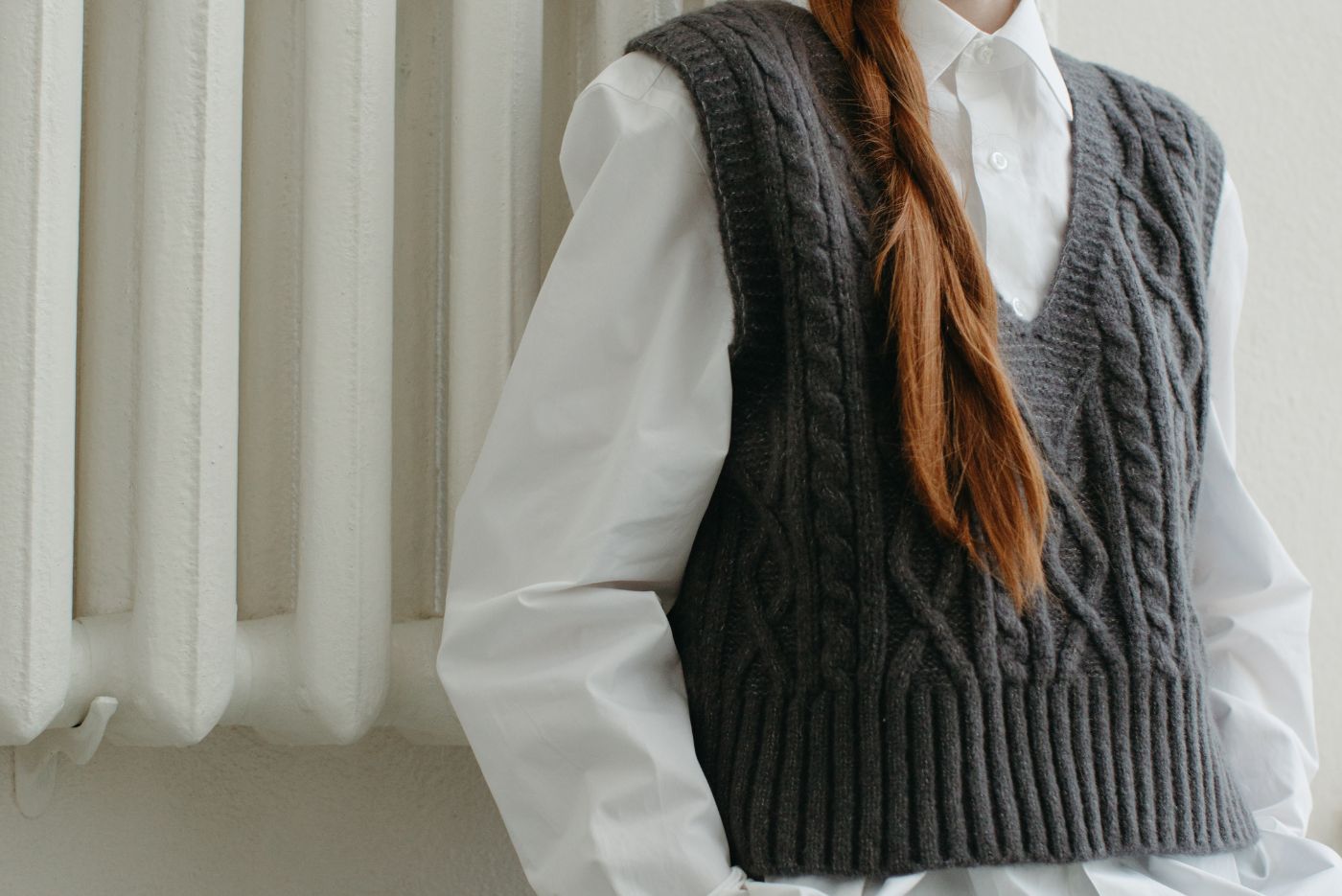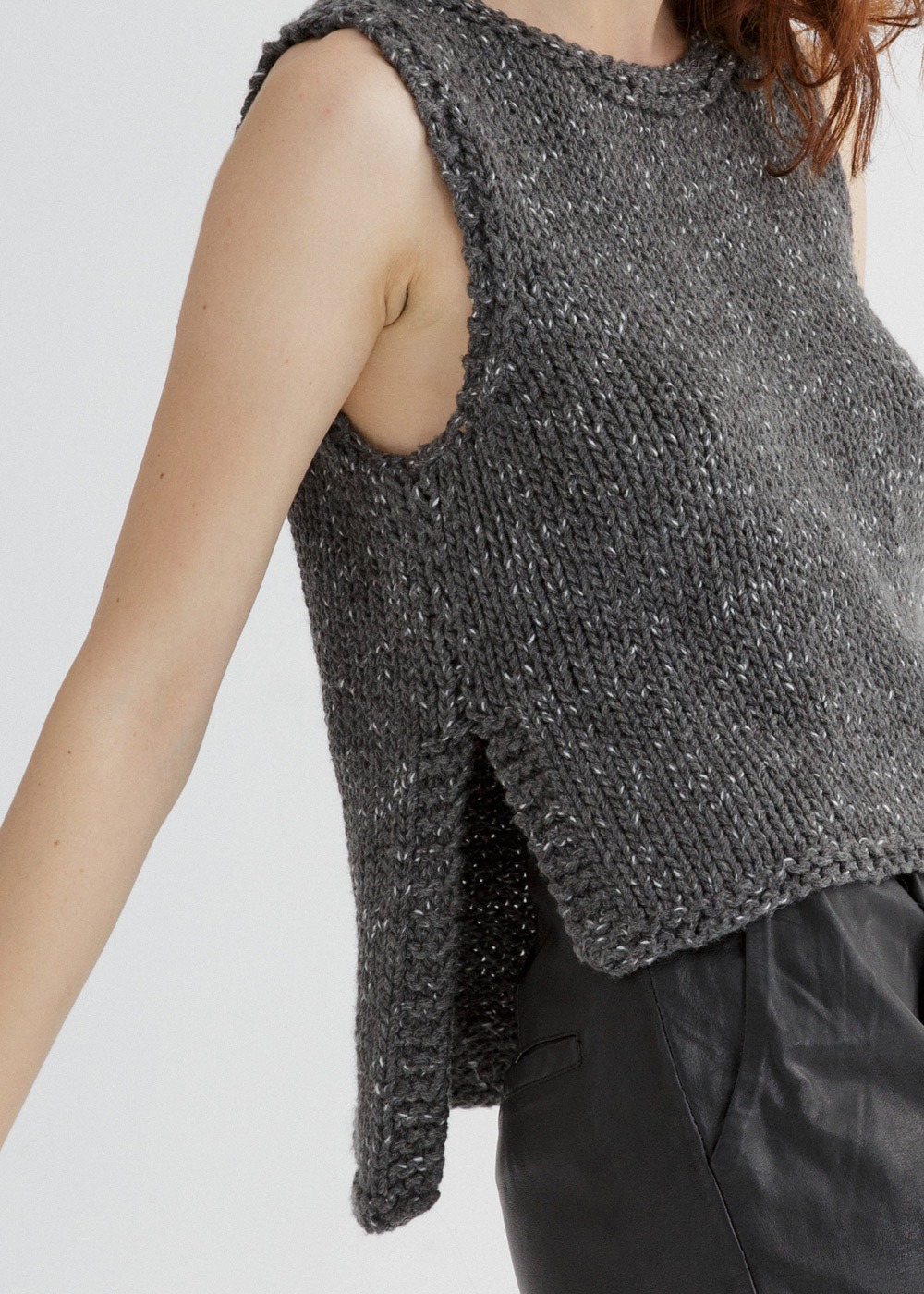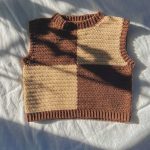
The world of knitting offers a treasure trove of creative possibilities, from delicate scarves to cozy sweaters. Among these projects, a knitted vest stands out as a versatile and stylish addition to your wardrobe. Whether you’re seeking a warm layer for chilly evenings or a unique fashion statement, mastering the art of knitting a vest is a rewarding endeavor.
Gathering Your Supplies:
Embarking on your knitting adventure requires a few essential tools:
-
Knitting needles: The backbone of your knitting journey, choose needles in a size appropriate for your chosen yarn. For beginners, worsted weight yarn and size 8 needles are a great combination.
-
Yarn: The fabric of your creation, select worsted weight yarn for its beginner-friendly thickness and wide color range.
-
Tapestry needle: A slender tool for weaving in loose ends, ensuring a polished finish.
-
Stitch markers (optional): Handy helpers for keeping track of important points in your pattern.

Casting On: The Foundation of Your Vest
Before diving into the intricate stitches, you need to create the foundation of your vest – the cast-on row. This initial row establishes the width of your vest. Determine the desired width and follow a cast-on stitch tutorial, either online or in a knitting reference book.
Knitting the Body: The Fabric of Your Creation
With the cast-on row in place, it’s time to bring your vest to life. Stockinette stitch, a simple yet versatile technique, will form the main fabric of your vest. This stitch creates a smooth, even texture, perfect for a cozy and stylish garment. Simply knit every row until you reach the desired length for the vest body.
Armholes: Shaping Your Vest
To accommodate your arms, you’ll need to create armholes. At the point where you want the armholes to begin, start decreasing stitches on either side of your work at regular intervals. Common decrease techniques include knit two together (K2tog) and slip one, knit one, slip one pass (S1K1PSSO). Online tutorials can guide you through these techniques.
Neckline: Shaping for a Perfect Fit
Once the armholes are complete, you’ll need to shape the neckline for a comfortable and flattering fit. The front and back pieces of the vest will be worked separately at this stage. For the neckline, follow a specific shaping pattern on the front piece. This pattern will involve decreasing stitches at regular intervals to create a curved neckline. Look for free beginner-friendly vest knitting patterns online that provide detailed instructions and stitch counts.
Shoulders: Joining the Pieces
With the neckline shaping finished, continue knitting the shoulder sections of the front and back pieces straight until they meet at the top. Here, you’ll use a three-needle bind-off technique to seamlessly join the shoulder pieces. This technique involves knitting with three needles instead of two, creating a smooth and secure join.
Finishing Touches: Polishing Your Vest
The final step is to add the finishing touches that transform your knitted project into a polished piece. Using your tapestry needle, weave in all the loose ends, ensuring a tidy and professional look. You can also add optional details like buttons or buttonholes for a more customized and stylish vest.
Tips for Beginner Knitters:
As you embark on your knitting journey, keep these tips in mind:
-
Yarn choice: Opt for worsted weight yarn as it’s a good thickness for beginners to work with and offers a wide range of colors.
-
Gauge swatch: Before starting the actual vest, knit a gauge swatch using your chosen yarn and needles. This helps you ensure the finished size will match the pattern’s measurements.
-
Pattern guidance: Consider using a free beginner-friendly vest knitting pattern online. It will provide detailed instructions, stitch counts, and helpful visuals.
-
Basic stitch mastery: Make sure you’re comfortable with casting on, knitting, and basic decrease techniques before starting the vest.
-
Embrace experimentation: Once you’ve mastered the basics, you can explore different stitch patterns, yarn colors, and embellishments to personalize your vest.

-
Exploring Different Stitch Patterns:
Stockinette stitch is a reliable and versatile option, but the world of knitting offers a vast array of stitch patterns to add texture, visual interest, and personality to your projects. Consider incorporating some of these techniques into your next vest:
-
Rib Stitch: This classic stitch creates a ribbed texture that adds visual interest and a bit of stretch to your vest. It’s perfect for the bottom band, neckline, or armholes.
-
Cable Stitch: This technique involves twisting stitches to create raised cables that add a sophisticated touch to your vest. Experiment with different cable patterns for a truly unique look.
-
Lace Stitch: For a lighter and more delicate feel, explore lace stitch patterns. These intricate designs incorporate openwork sections, creating a beautiful and airy fabric.
Choosing the Right Yarn:
Yarn selection plays a crucial role in the final look and feel of your knitted vest. While worsted weight yarn is a great starting point, venturing beyond offers exciting possibilities:
-
Fingering weight yarn: This lighter weight yarn is ideal for creating delicate and airy vests that are perfect for warmer weather.
-
Bulky weight yarn: For a cozy and chunky vest perfect for layering in the winter, explore bulky weight yarn.
-
Yarn with different textures: Consider using yarns with unique textures, such as boucle, tweed, or variegated, to add depth and visual interest to your vest.

Color and Embellishments:
The beauty of knitting lies in its ability to personalize your creations. Don’t be afraid to experiment with colors and embellishments to express your unique style:
-
Color combinations: Move beyond single-colored vests and explore stripes, colorwork patterns, or using different colors for the front and back pieces.
-
Buttons and buttonholes: Adding buttons and buttonholes transforms your vest into a more functional and stylish garment.
-
Embroidery: For a touch of personalization, consider embellishing your vest with embroidery stitches or patches.
By venturing beyond the basics and exploring these techniques, you can unlock a world of creative possibilities and craft unique and personalized knitted vests that showcase your skills and style.
Resources for Beginner Knitters
As you embark on your knitting journey, having access to helpful resources can make the learning process smoother and more enjoyable. Here are some additional resources to support your knitting adventure:
Online Knitting Communities:
-
Ravelry: This comprehensive website is a haven for knitters of all levels. It offers a vast library of free and paid knitting patterns, including a dedicated section for vests. You can also join Ravelry forums to connect with other knitters, ask questions, and share your projects.
-
YouTube: An invaluable resource for visual learners, YouTube offers a treasure trove of knitting tutorials. You can find videos on everything from basic stitches to advanced techniques, making it a great platform to learn new skills and techniques related to knitting vests.
Knitting Blogs and Websites:
Many websites and blogs cater specifically to beginner knitters. These resources offer valuable beginner-friendly knitting patterns, tutorials, and tips. Look for websites that focus on specific projects like vests, providing you with focused guidance.
Local Yarn Stores:
Your local yarn store is a valuable resource for beginner knitters. Many stores offer knitting classes specifically designed for beginners. Plus, the friendly staff at your local yarn store can be a great source of advice, tips, and inspiration. They can help you choose the right yarn for your project and answer any questions you may have about knitting vests.
Knitting Books:
While online resources are readily available, knitting books offer a wealth of information and inspiration. Look for beginner-friendly knitting books that include patterns for vests, providing you with a comprehensive guide to creating your own cozy and stylish garment.
By utilizing these resources, you can continue learning and growing as a knitter, allowing you to craft stunning and personalized knitted vests that showcase your creativity and expertise. So, grab your needles, yarn, and newfound knowledge, and get ready to embark on a rewarding adventure in the world of knitting!
-

